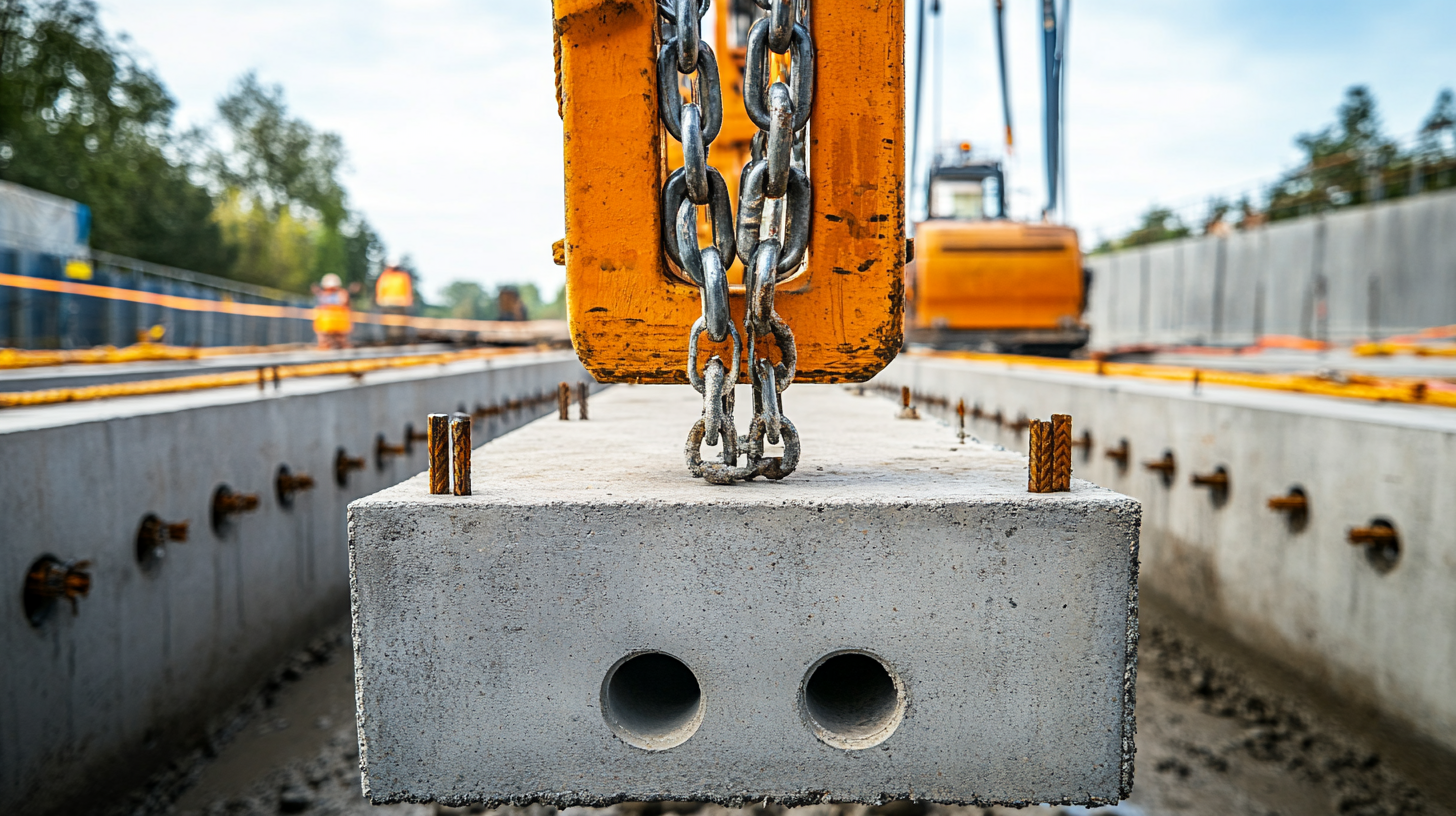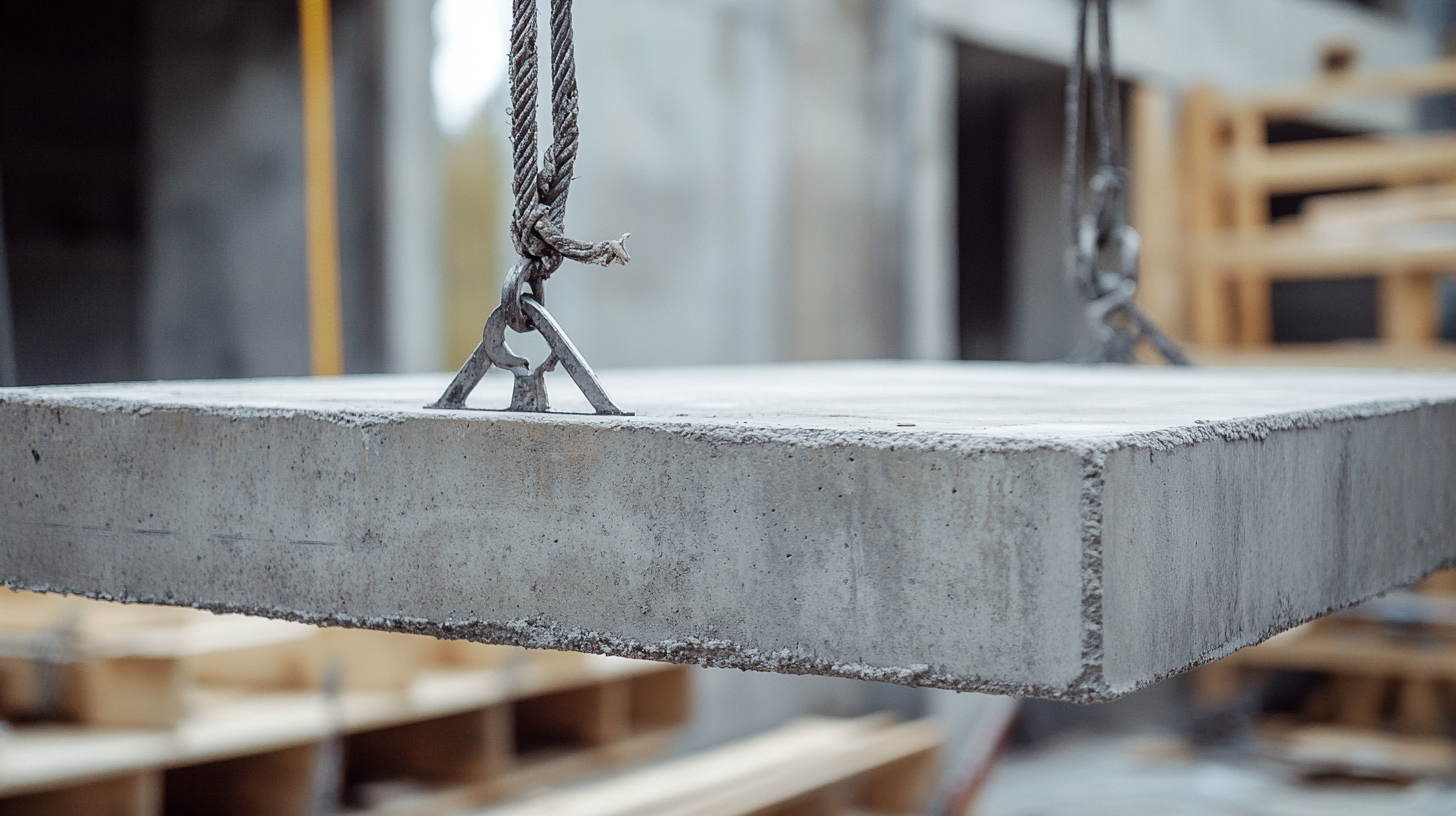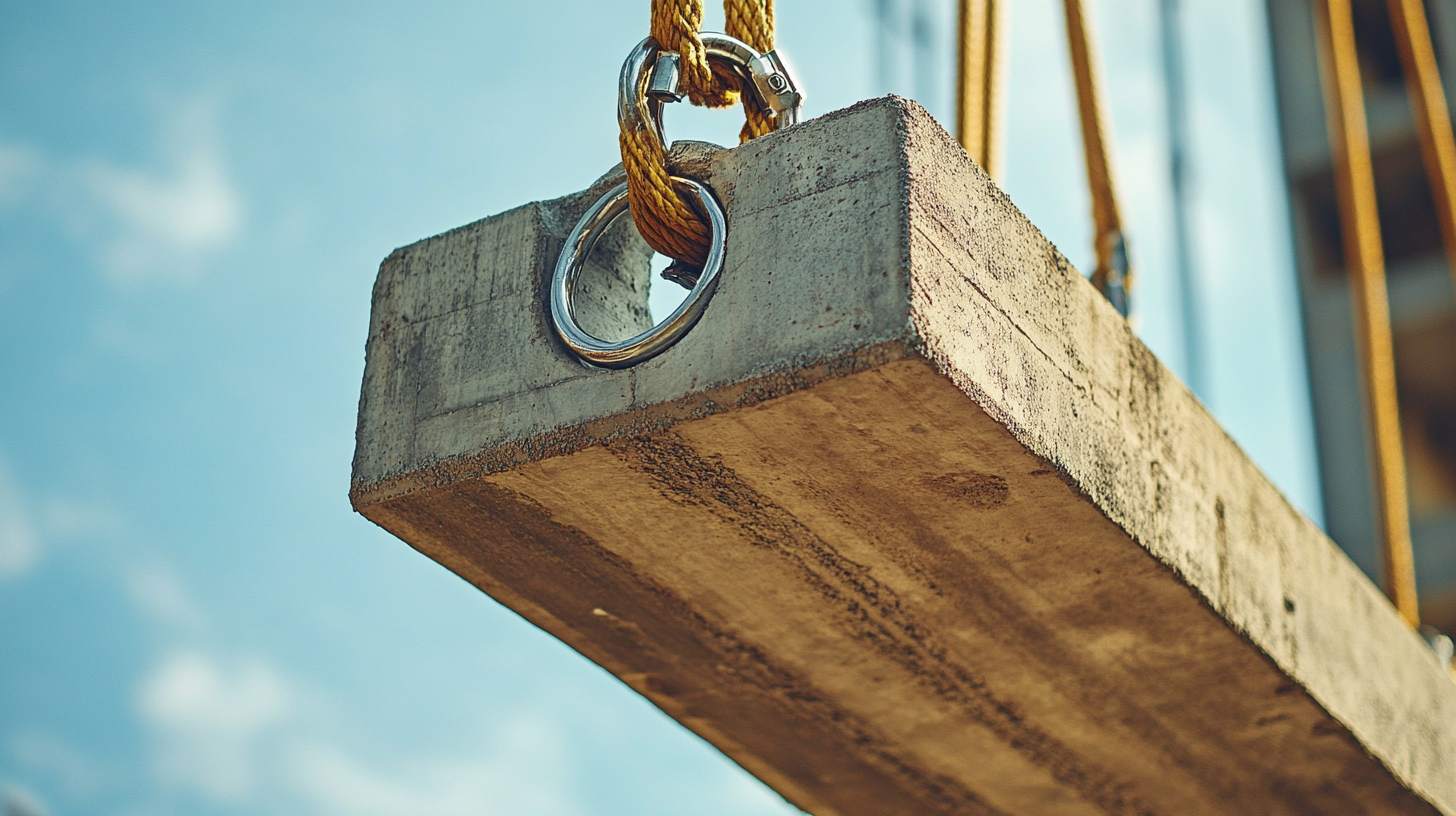In the construction industry, efficiency and safety are paramount, and one of the essential components in precast concrete handling is the use of specialized lifting devices. Precast Concrete Lifting Eyes play a crucial role in ensuring that precast elements can be lifted, transported, and placed with precision and safety. According to a report by MarketsandMarkets, the precast concrete market is projected to reach USD 140 billion by 2027, growing at a CAGR of 5.8%, indicating a robust demand for reliable lifting solutions in various applications. As projects become more complex and the need for innovation increases, the importance of selecting the right lifting eyes cannot be overstated. Proper selection not only enhances operational efficiency but also minimizes the risk of accidents on site, making it imperative for industry professionals to have a comprehensive understanding of the factors that influence their choice in Precast Concrete Lifting Eyes.

When selecting precast concrete lifting eyes for your construction projects, it is essential to understand the various types available and their specific applications. The most common types include vertical lifting eyes, which are designed for direct lifting from the top; horizontal lifting eyes, ideal for side handling; and adjustable lifting devices that allow for flexibility in placement. Each type serves a unique purpose, ensuring that the lifting process is both safe and efficient.
Vertical lifting eyes are particularly effective for precast elements that need to be hoisted straight up, such as slabs and walls. These eyes are anchored securely to the concrete, providing maximum strength. On the other hand, horizontal lifting eyes cater to more diverse handling situations, making them suitable for pieces that require lateral movement during installation. Furthermore, adjustable lifting eyes can accommodate various angles and configurations, making them invaluable when dealing with irregularly shaped components or complicated layouts. By carefully choosing the right type of lifting eye for your specific needs, you can significantly enhance the safety and effectiveness of your precast concrete operations.
When selecting precast concrete lifting eyes for your projects, understanding industry standards and load capacity requirements is crucial. Lifting eyes are critical components used in various applications, including construction and mining, where load safety and reliability are non-negotiable. Adhering to established standards ensures that these lifting devices can handle the specified loads while maintaining structural integrity. It's essential to consider factors such as the material strength, the type of connection with lifting hardware, and the environmental conditions to which the lifting eyes will be exposed.
Recent advancements in related industries highlight the importance of rigorous safety standards. For instance, in the mining sector, the latest regulations emphasize hoist safety and energy efficiency, underscoring the interconnectedness of lifting mechanisms and their performance. Similarly, the FAA has made strides in aviation safety regulations, reflecting a growing trend towards prioritizing safety measures across various fields. As you choose precast concrete lifting eyes, staying updated on these industry trends and regulations will help ensure that your selections not only meet but exceed safety and performance expectations.
When choosing the right precast concrete lifting eyes for your projects, material selection becomes paramount, particularly in the comparison between steel and polymer options. Steel, renowned for its exceptional strength and durability, provides a robust solution for heavy lifting applications. However, advancements in polymer materials—especially when combined with other elements—are reshaping this landscape. Recent studies highlight the strength-to-weight ratio of innovative polymer composites that can rival traditional materials like steel, thereby offering remarkable flexibility without compromising structural integrity.
Moreover, the environmental aspects of material selection are gaining increasing attention. Sustainable alternatives, such as glass fiber-reinforced polymers (GFRPs), not only exhibit impressive structural performance but also present a lesser environmental impact compared to conventional materials. The construction industry is beginning to recognize the advantages of these eco-friendly materials, which align with broader sustainability goals. Emphasizing the versatility and capabilities of modern polymers could not only enhance project outcomes but also contribute to a more sustainable future in construction.
| Attribute | Steel Lifting Eyes | Polymer Lifting Eyes |
|---|---|---|
| Weight Capacity | High (up to 50 tons) | Moderate (up to 20 tons) |
| Corrosion Resistance | Low (requires coatings) | High (inherently resistant) |
| Installation Ease | Moderate (may require tools) | Easy (lighter weight) |
| Temperature Resistance | Good (up to 300°F) | Excellent (up to 400°F) |
| Cost | Higher | Lower |
When it comes to lifting operations using precast concrete lifting eyes, adhering to best practices for installation and safety protocols is paramount. Ensuring that lifting eyes are correctly positioned and securely attached can prevent accidents and equipment damage. Prior to installation, conduct thorough inspections of the lifting hardware to identify any potential defects or degradation that could compromise safety during use. This involves checking for corrosion, cracks, or any signs of wear and tear. Proper training for personnel involved in the lifting process also plays a crucial role in maintaining a high safety standard.
In the context of recent technological advancements, like the introduction of new safety protocols for AI agents via the MCP and A2A frameworks, it’s important to integrate these lessons into the construction domain. Just as AI tools require rigorous safety checks—highlighted in the MCP protocol—it is essential for lifting operations to adopt similar systematic safety assessments. Regular safety audits and adherence to installation guidelines not only enhance operational efficiency but also align with the overarching goal of fostering a safer work environment. Emphasizing these practices will aid in navigating the complexities of lifting operations while prioritizing safety at every step.

When embarking on a project that involves precast concrete lifting eyes, understanding cost considerations is crucial for effective budgeting. Precast lifting eyes can vary significantly in price based on factors such as material quality, design complexity, and manufacturer reputation. It's essential to conduct thorough research to assess the specifications required for your project while comparing quotations from different suppliers. This not only helps in finding a competitive price but also ensures that you are selecting the right product that meets safety and performance standards.
In addition to the initial purchase price, project managers should consider other financial factors such as transportation costs, installation expenses, and potential maintenance fees. These additional costs can greatly impact the overall budget, making it vital to account for them during the planning phase. Furthermore, investing in high-quality precast concrete lifting eyes may lead to long-term savings by reducing the need for replacements or repairs. By carefully analyzing both upfront and ongoing expenses, you can create a balanced budget that optimally supports your project goals while avoiding unexpected financial setbacks.

